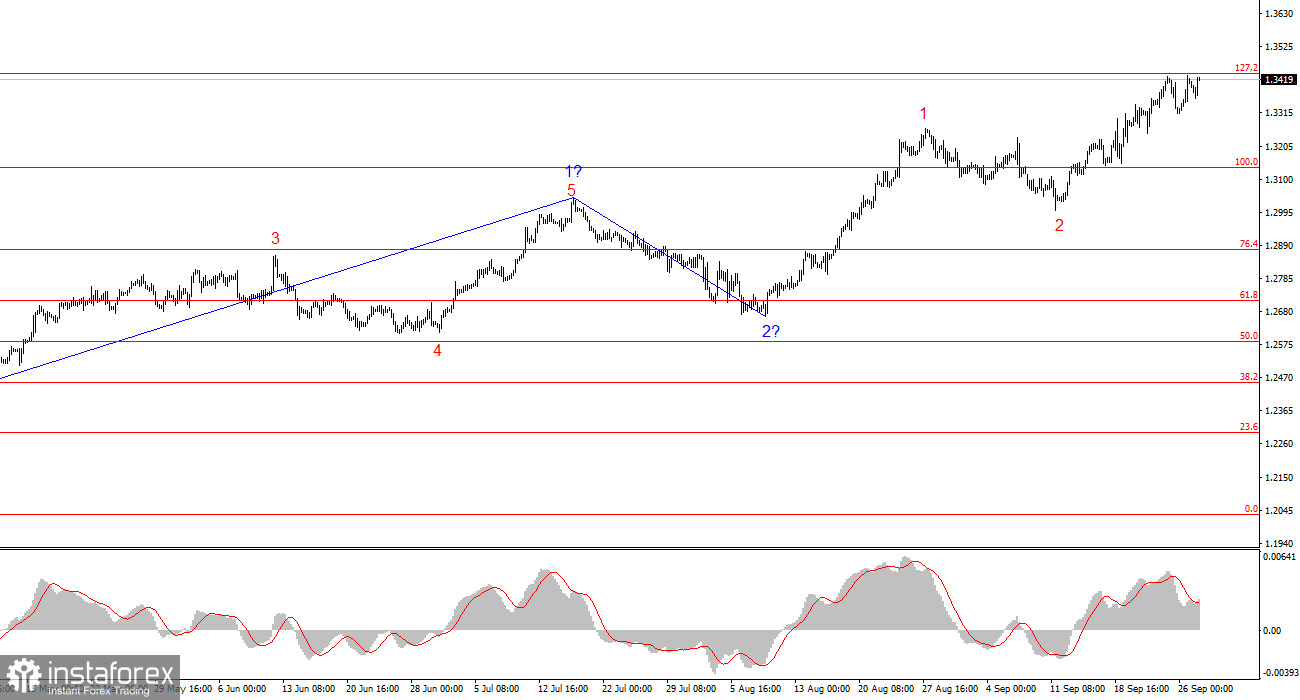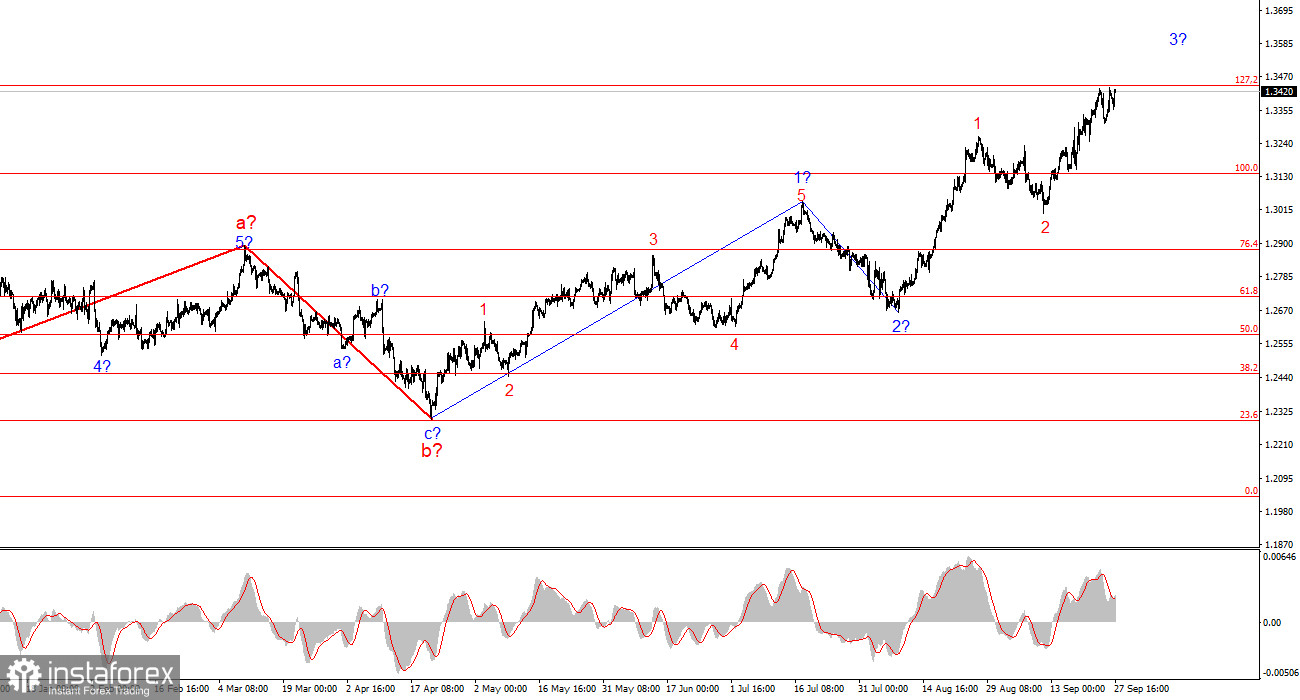
The wave structure of the GBP/USD pair remains quite complex and continues to develop into a more prolonged pattern. At one point, the wave pattern seemed quite convincing and suggested a downward series of waves with targets below the 1.2300 level. However, in reality, the growing demand for the British pound disrupts any potential wave patterns. The market persistently continues to increase long positions.
Currently, I can only assume a significant complication of the upward segment of the trend that began on April 22. If this assumption is correct, then waves 1 and 2 might have already formed. If so, the construction of the third upward wave began on August 8, which is also taking on an extended, five-wave structure. Therefore, the British pound has the potential to rise up to the 1.4000 level, which will be just the third wave in the expected wave c. A fifth wave could follow, potentially forming a complete five-wave structure.
The GBP/USD exchange rate didn't change on Friday, but this fact is practically insignificant. The pound's prices have returned to this week's peaks for the third time. Each time the pullback from the reached highs is smaller and smaller, meaning the chances of continuing the formation of the upward wave increase. We just have to wait for a successful attempt to break the 1.3438 level, which corresponds to 127.2% on the Fibonacci scale.
Honestly, it's challenging to say what might save the U.S. dollar from further decline. While it still somewhat balances with the euro, it's hopelessly falling against the pound. Yesterday, there were positive reports from the U.S.—important ones at that—and Jerome Powell, for the first time in a long while, didn't give any dovish signals to the market. Yet, demand for the U.S. dollar still didn't increase. Therefore, the market no longer seems to be influenced by Powell's statements or those of other FOMC members, nor by U.S. economic data. There's a deliberate devaluation of the dollar and an appreciation of the British currency. Why? No one can currently answer that question. Many speculate and create hypotheses, but how can they be verified?
Based on the above, it's extremely difficult to determine what drives the pair's movement. Positive U.S. news doesn't trigger dollar growth, while the pound continues to rise almost daily, even without any apparent reason. Therefore, a successful attempt to break through the 1.3438 level would suggest that the market intends to continue increasing demand for the pound.
General Conclusions:
The wave pattern of the GBP/USD pair continues to become more complicated. If the upward trend began on April 22, it is being constructed very slowly. I still find selling the pair more attractive, but signals are needed for this. At present, I have no doubts that the formation of a new upward wave has started and is continuing. The nearest target for this wave is the 1.3440 level, corresponding to 127.2% on the Fibonacci scale. A successful attempt to break this mark could see the market aiming even for the 1.3800 level.
At a higher wave scale, the wave pattern has transformed. We can now assume the formation of a complex and extended upward corrective structure. At the moment, it looks like a three-wave structure, but it could evolve into a five-wave structure, which may take several more months to complete, if not longer.
Key Principles of My Analysis:
- Wave structures should be simple and understandable. Complex structures are difficult to trade and often involve changes.
- If there's uncertainty about what's happening in the market, it's better to stay out.
- One can never be 100% sure about the direction of the movement. Always remember to set Stop Loss orders.
- Wave analysis can be combined with other types of analysis and trading strategies.
 English
English 
 Русский
Русский Bahasa Indonesia
Bahasa Indonesia Bahasa Malay
Bahasa Malay ไทย
ไทย Español
Español Deutsch
Deutsch Български
Български Français
Français Tiếng Việt
Tiếng Việt 中文
中文 বাংলা
বাংলা हिन्दी
हिन्दी Čeština
Čeština Українська
Українська Română
Română


